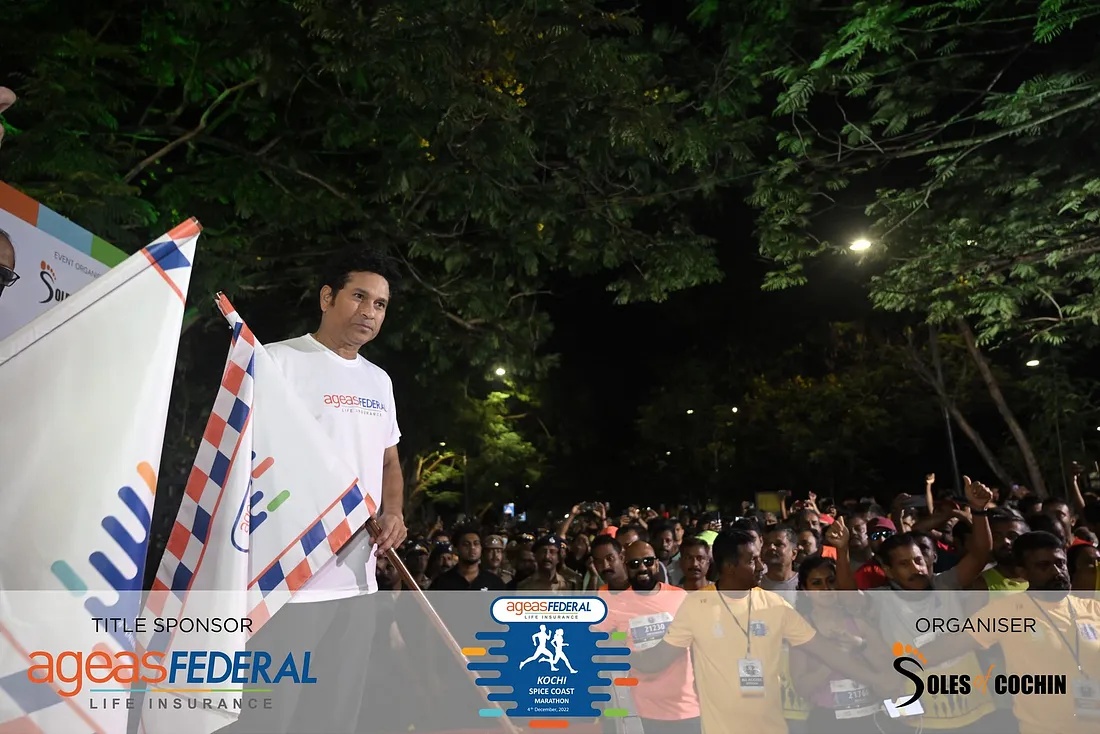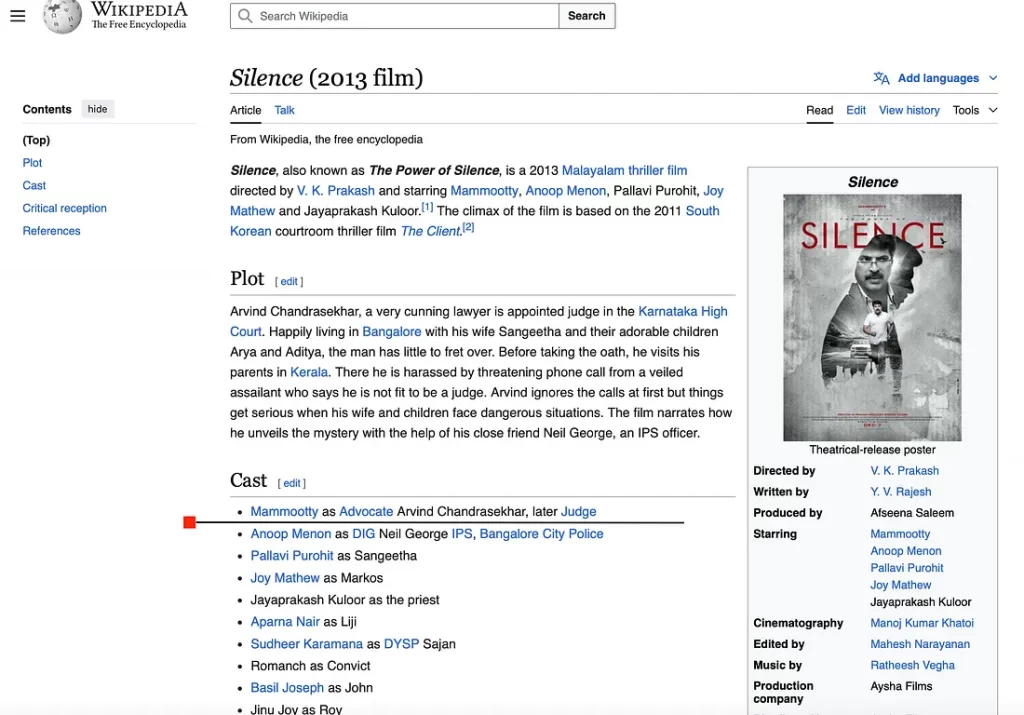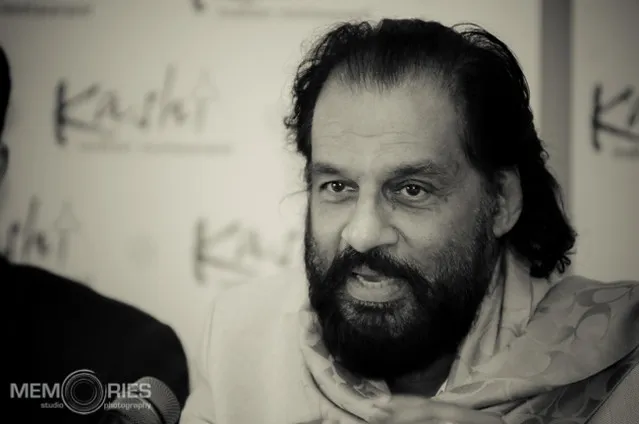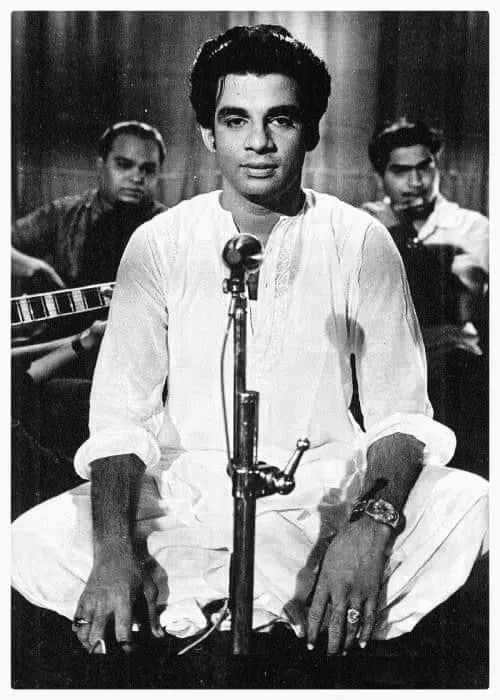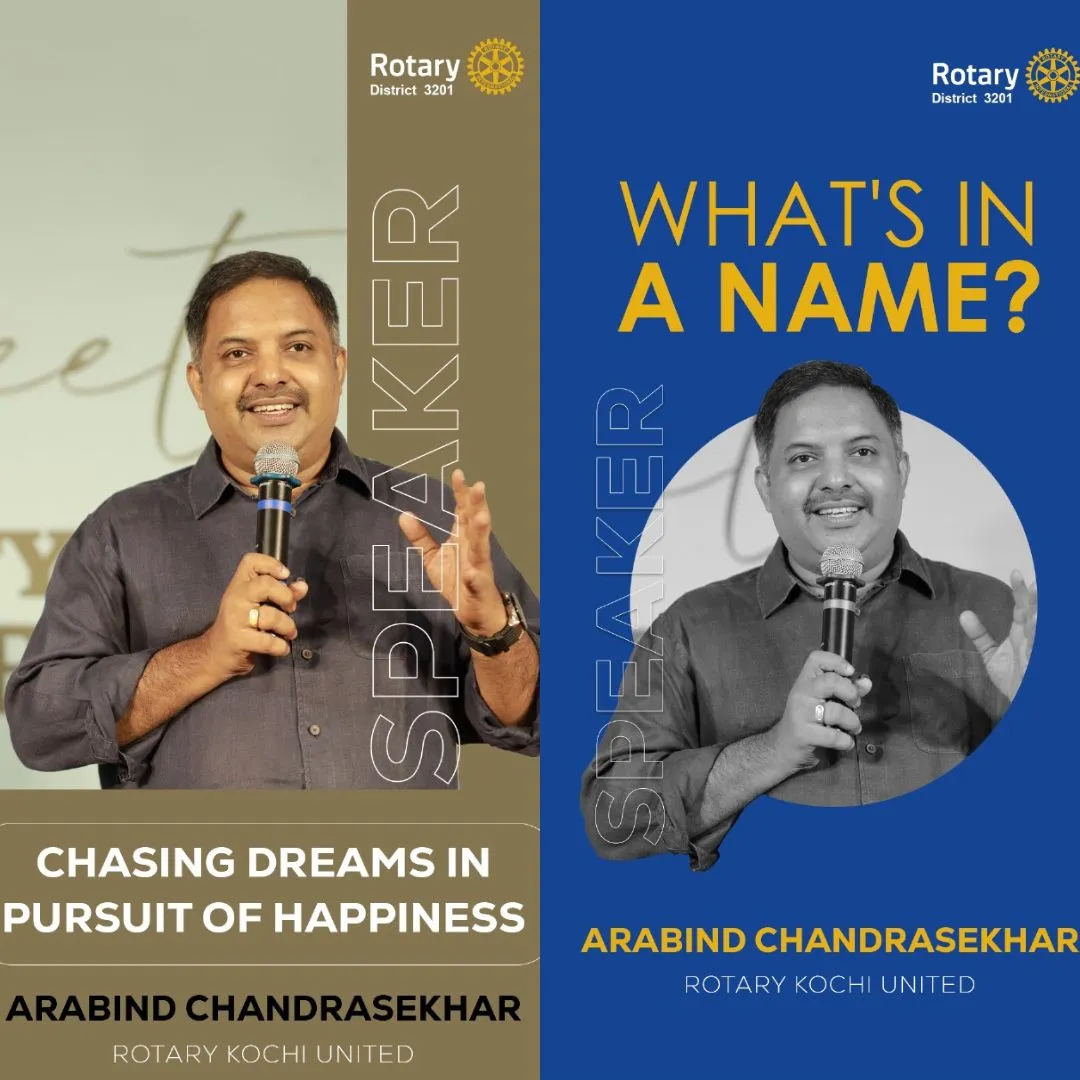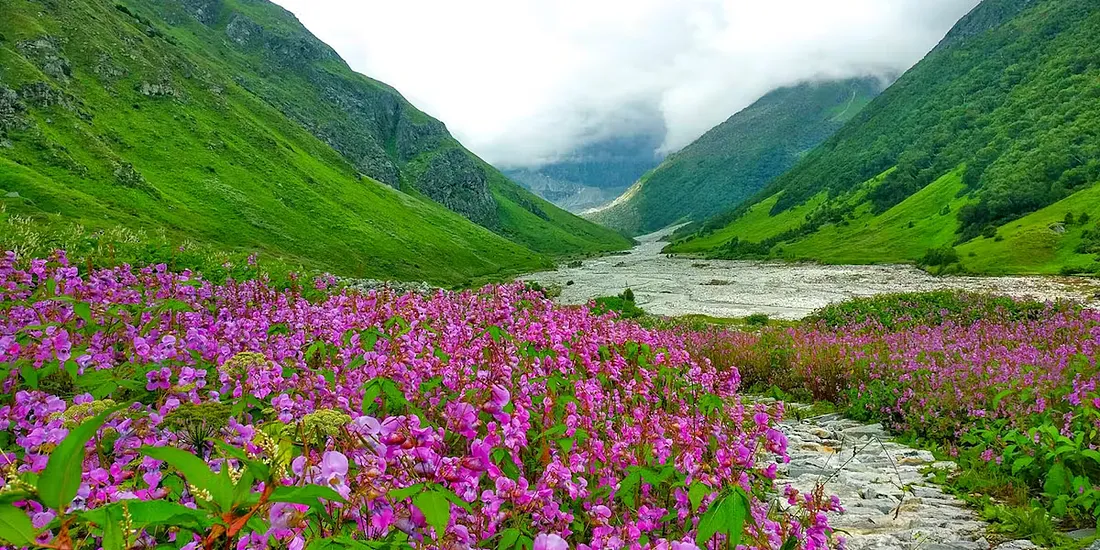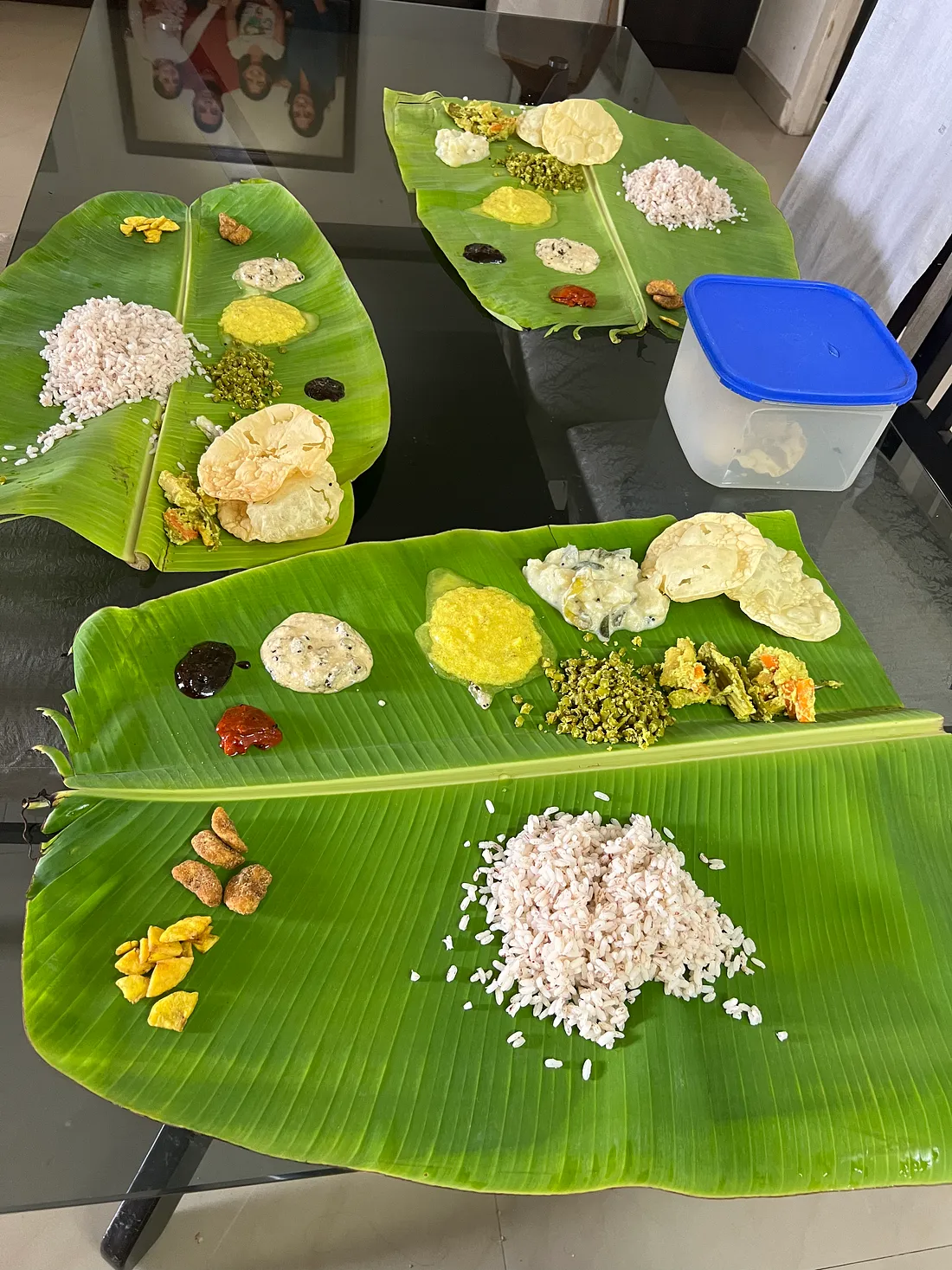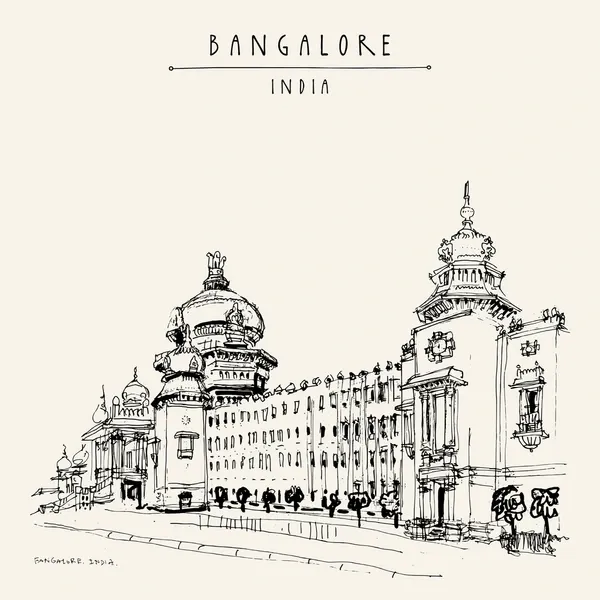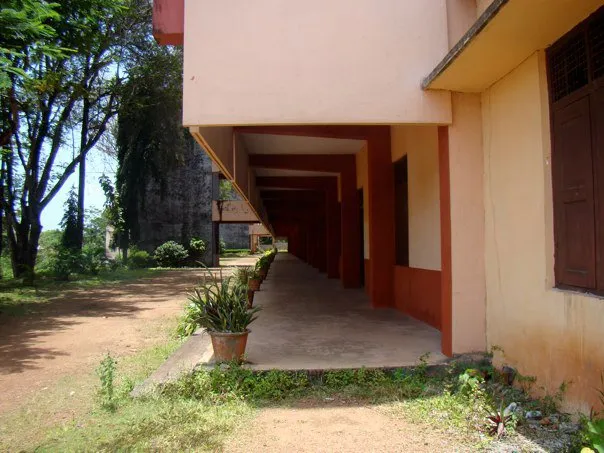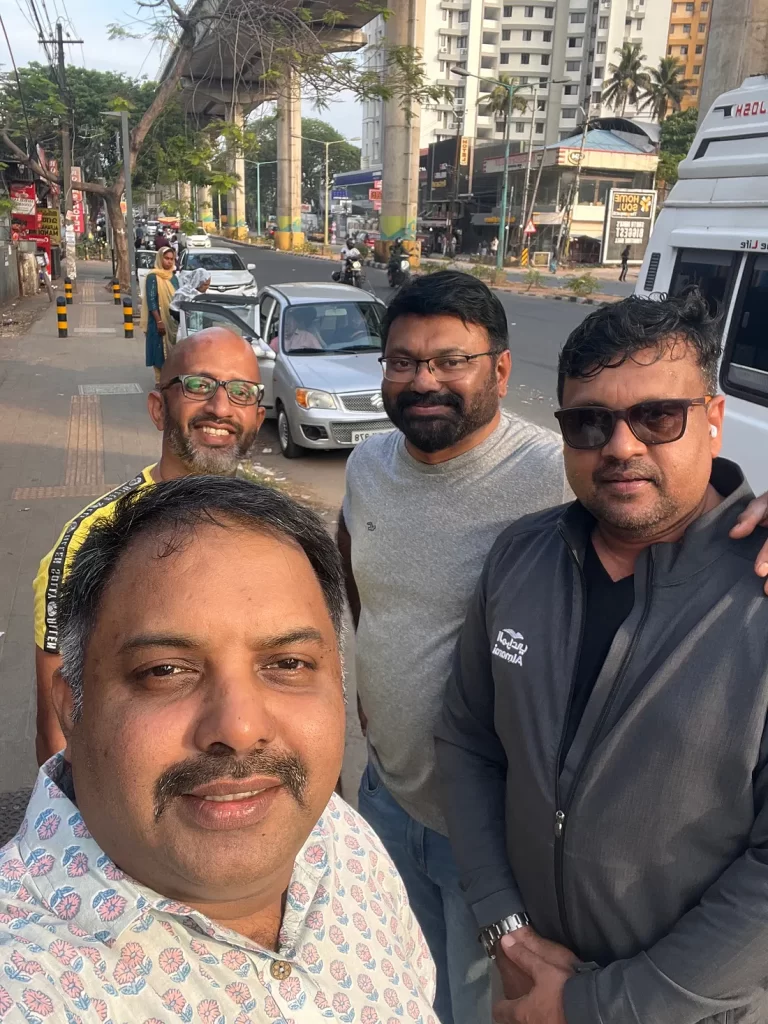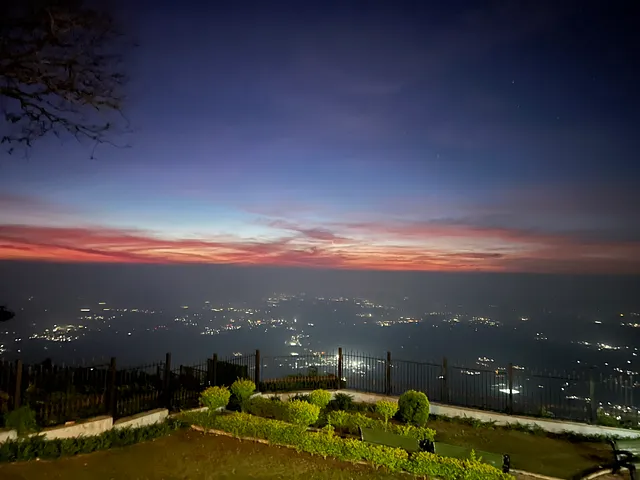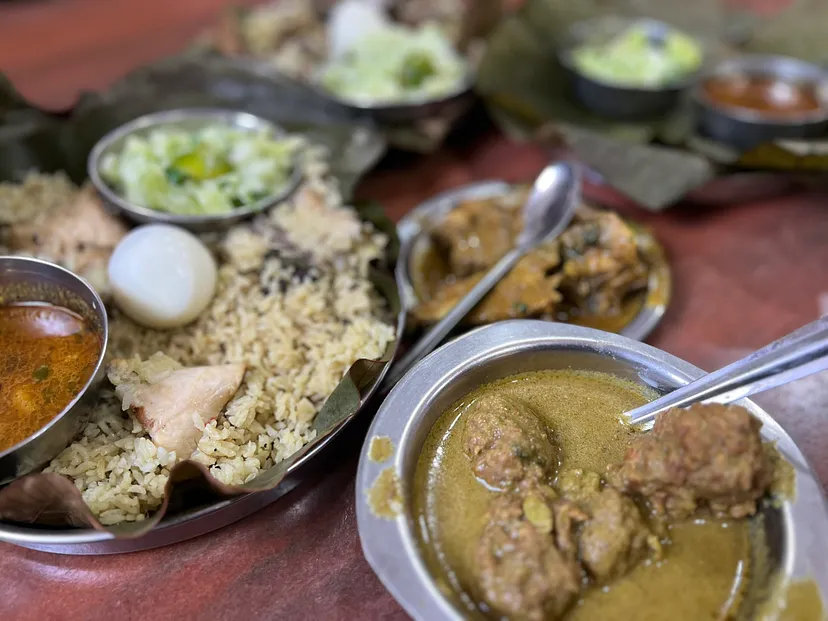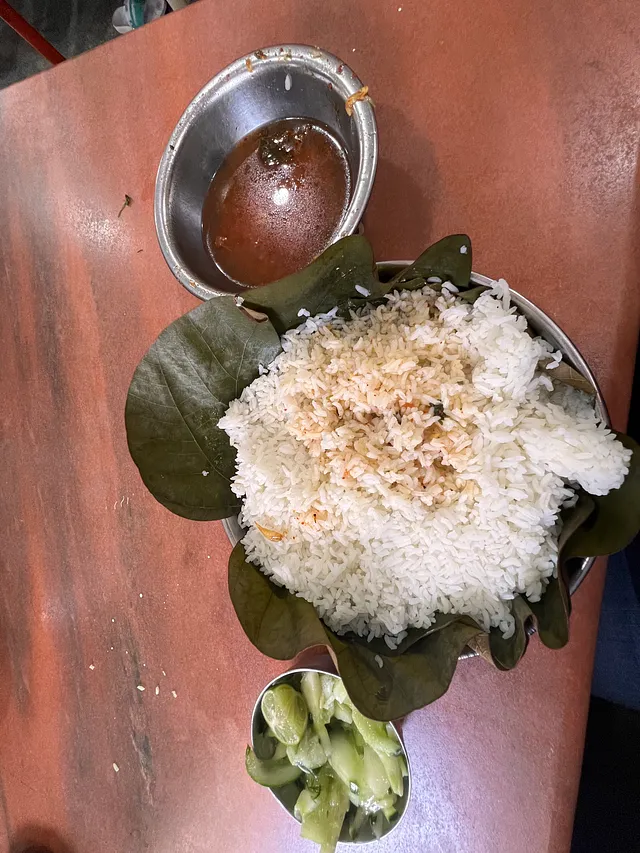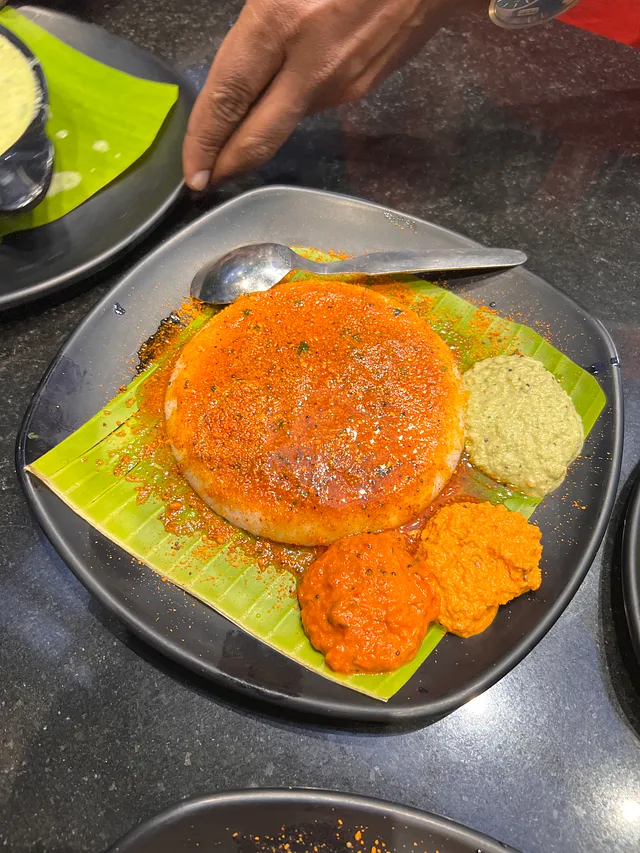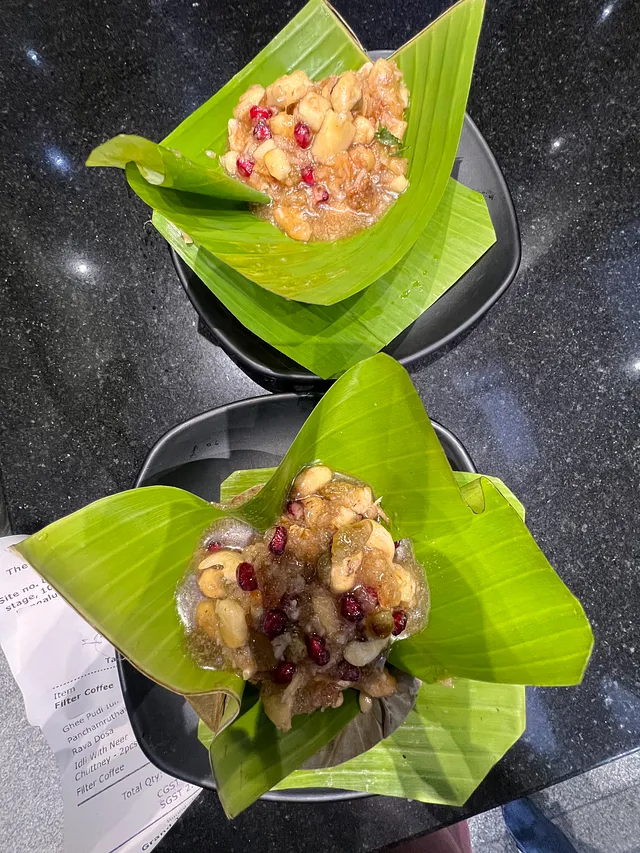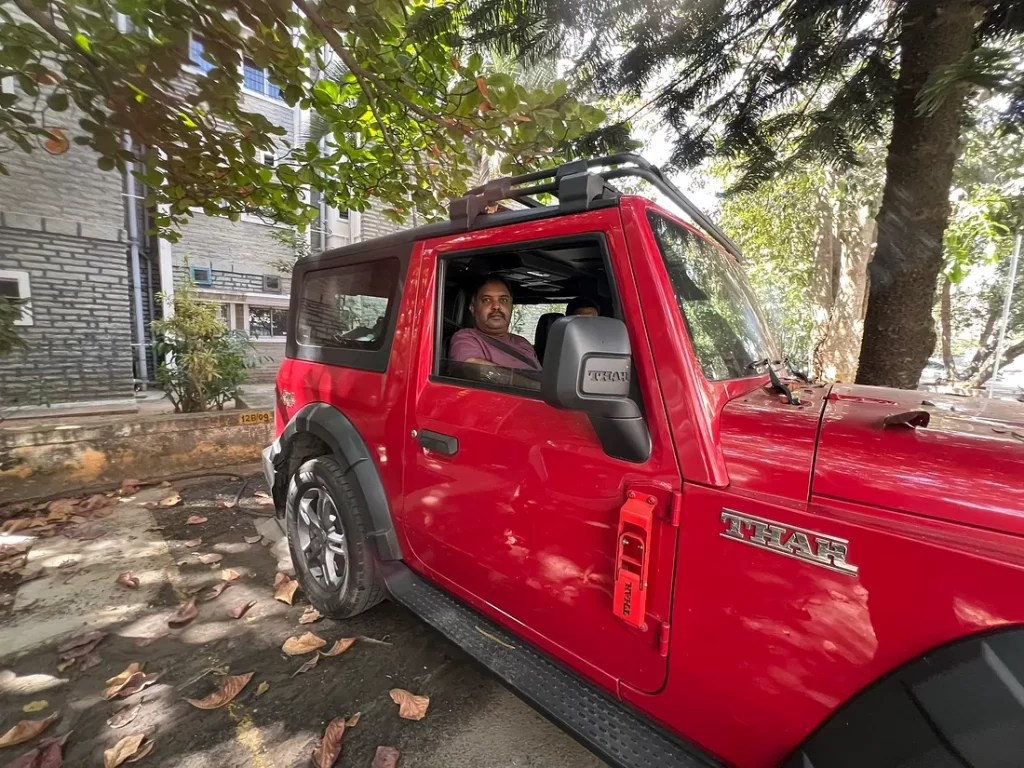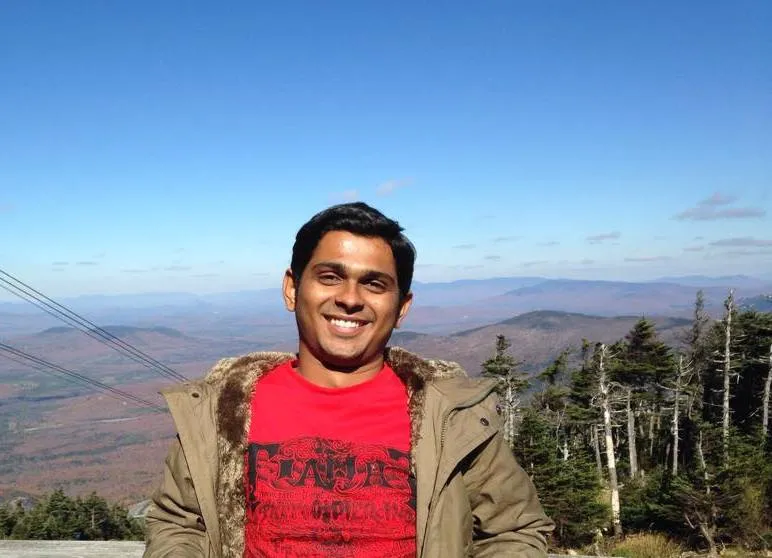It was a distant dream for me too!
I had thought of running in a Marathon in 2018. I just searched for marathons and I came across a web page with the name ‘Spice Coast Marathon’. I started reading the web pages slowly and I read it carefully in the frequently asked questions session, the most exciting statement I have read after desiring to be a marathon runner. It was this line,
“Can I walk the course?
Of course! Walk-jog is a strategy used by several different runners, the world over. You can walk, run, roll, or use your legs to complete the distance of the course in any way you like as long as you stick to the stipulated time limits and cut-off times.”
That gave me instant motivation. I spoke to myself, and my voice echoed in my brain, so I don’t have to run throughout the course, I can finish within the time by running, walking, or crawling till I touch the finish line!
That year I registered for the marathon without asking anyone! But I was busy with my official work and couldn’t practice. I just thought of participating in the fun run of 5 KM, but fate had a different plan. I was supposed to travel and would be late, reaching past midnight. My desire to take part in a prestigious marathon abruptly ended there, even though I collected my BIB and T-shirt (my colleague helped me collect it). I thought of waiting until the next year and thereafter the toughest times of COVID too.
In 2022, I saw an update about the Spice Coast Marathon on social media. Inside me, an aspirational runner woke up, and I searched for the registration status online. Without thinking much, I registered with UPI payment, and instantly received a mail and an SMS back. For a moment, I couldn’t believe what I had read in the SMS. I had registered for a 21KM, a half marathon! How can someone who is regularly irregular in doing physical activities take part in a half marathon? Without proper guidance and practice, can anyone finish this? Hundreds of questions circled me! A conflicted me had realized it was too late to correct the instant thought of running a marathon decision!
I knew a few people from the running community, Vani Viswanathan, was one among them. She is an active member of the ‘Soles of Cochin’ running group and was part of the organising team of the Spice Coast Marathon many times. I thought of calling her and asking a favor to downgrade my plans from 21 to 5 KM! On the fourth ring, she attended my call. I asked her, “Are you still part of the Spice Cost?” She said, “What do you want?” I just shared my sad story, how I had registered out of excitement for 21KM, and now want to down-plan it. She listened to me carefully and said, “Arabind, Let me tell you something. If you want to do it, you have enough time. Now we have one month and 17 days to go. If you start practicing slowly, you can still do it.” I opened up and shared my helplessness. She insisted that I should do it. On second thought, I felt it was right and said, “I will do it”.
And I must say, That was one of the most solid decisions I had ever made in my life.
The very next day, I started walking. It continued for 2–3 days, and slowly started increasing the speed. I could cover 2 km initially, which progressed to 5 km and then to 7 km. Even though I was part of a cycling team and continued cycling for about a year, I had never tried running. I never had someone to guide me and thought of getting assistance from the Internet. Some of the videos suggested walk-and-run combinations, and I just imitated it for the next week. One thing was sure. After a couple of weeks, I was feeling positive and never felt discouraged.
I thought of having a companion to motivate me when I walked. I asked my wife, who said she was too busy in the morning, especially taking care of our younger one and sending her to school. She also wanted her me-time, sipping her favorite tea and reading the newspaper.
I usually listen to songs and podcasts while walking and driving. This time, I thought of playing my favorite podcasts and interview videos (without visuals). Each morning, I plugged in my earphones and started listening to interviews and great podcasts. As the speed and mood of the conversations increased, I consciously increased my speed and I was sweating like never before. After so many years, I felt positive and confident about myself. My family was surprised to see a new me, but they thought I would stop in between, as they had experienced in the past.
The event was scheduled for 4th December. As the date was nearing, I had a negative feeling. Would I be able to do it? Would it get canceled like the last time because of my official commitments? I shared my thoughts about running a marathon with my wife. Until then, I had not shared it with her. The week before the marathon, while having my favorite coffee in one of the regular coffee shops with my family friends (she was always worried about my health, especially about my diabetic condition), I just told her I was running my first marathon the very next week. She had doubts and lacked clarity about what I said. I said, “I am doing only a 5 km walk.” She was happy but skeptical about me.
On the previous day, I was excited about my journey, whereas my wife was worried. I gave her confidence and told her I would do only a fun run. She looked at me with a conflicted look and asked me to be safe. I nodded my head.
My elder daughter was always concerned about my health and told me on the previous day to avoid these kinds of adventurous activities. She said, “You are going through a medical condition and you should not try doing hard jobs like these.” I told her that I would be safe.
On 3rd December, I prepared myself. In the morning, I went to collect the bib and T-shirts. I went with my wife and saw her worried face. In the late evening, I thought of preparing myself. I hydrated properly and got ready with my T-shirt, candy bars, bib, and other things. Thinking that a single alarm might not wake me up, I set ten different timings with a small difference in minutes. I slowly started sleeping.
I woke up to the sound of the first alarm and slowly opened my eyes. It was an odd time and I couldn’t believe that I was waking up to run today! I got ready, took all my materials, and set off from home.
While I was driving, I thought of pumping myself up by listening to a peppy song. I couldn’t find the one that I liked and started playing some random Malayalam song. The roads were empty and within no time I reached M. G. Road. I saw police standing at Jos Jn. They stopped me there, asking me to take another route as it was closed for the marathon. I started panicking and went to another junction, the police stopped me and this repeated until the north of MG Road. My mind said, “Arabind, You are going to be late. How are you going to park your car? How would you reach on time?” I drove back to MG Road and took a small road that led to Press Club Road. There, I could see vehicles parked on all sides and couldn’t find a parking space. The designated parking area that I was supposed to use was completely occupied by the runners’ vehicles. I drove and found a space near the Marine Drive Dhanalakshmi Bank. Thank God, I parked and walked towards the venue.
As I entered the main venue, I couldn’t see a crowd. I had a sudden realization — they must have already flagged off the half marathon. I asked someone I met there and realized that I was 11 minutes late.
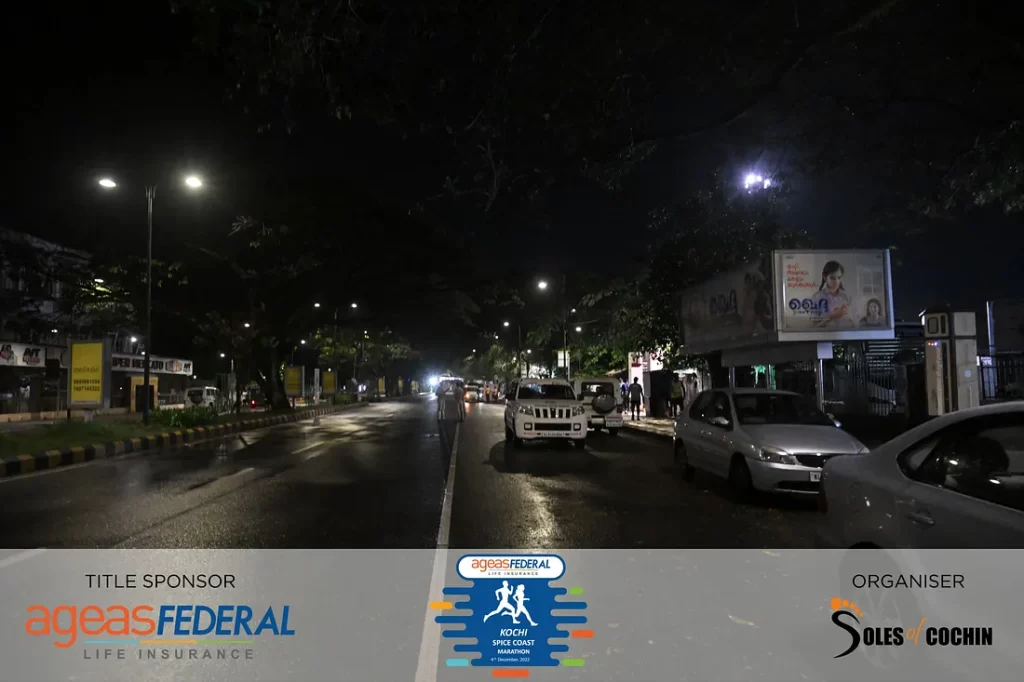
I told him that I was supposed to run the half marathon. He said, “It’s okay. You’re not that late. You may continue and you will be able to complete it if you wish to.” That motivated me. I asked his name and he said “Rocky.” He also told me even if I complete it, still be a winner. I nodded and confidently started from the starting point. I saw a red light strip on the road at the starting point and thought that it was the RF reader that tracked the run. I ran slowly and by the time I reached Maharaja’s College, I felt I would not be able to complete this and thought it was not worthwhile to continue running. Suddenly, I heard the voice of a volunteer cheering me. I slowed and started walking and took some time to reach Ravipuram. I saw water on the road; it had rained the previous day. Would it rain after some time? Even if it rained, I wouldn’t mind. I would continue my race, I decided firmly. By the time I reached Thevara junction, I saw a huge flashlight approaching my side. The pace was not like an ambulance; it was much slower compared to an emergency vehicle. As it neared me, I realized it was the official timer vehicle of the marathon. They were doing a pilot for a professional runner. I just laughed out loud and said to myself that somebody had just begun running, and on the other side, someone else was running towards the finishing line. Luckily nobody heard me laughing, and I started hastening my movements.
The Venduruthy Bridge before the Naval Base was tough for me. With heavy legs, I finished it and reached in front of the Naval Base. On my way to Thoppumpady from there, I thought about where the return point would be. I thought it must be Thoppumpady. I passed another RF reading equipment just after the NavalBase and saw many people coming running. I felt embarrassed to face them as I was just on my way towards Thoppumpady, while other people were already coming back. That made me think that I am not a professional like them. I am just a beginner. Why should I worry about it? I intend to complete my first marathon and not reach the first 100.
“100? I laughed again. How many people would be there to participate, hundreds, thousands? It’s okay, Arabind, even if it’s in the last, you can complete it”, I motivated myself. I saw hydration points and cheerleaders doing their job and not noticing me, as they were focusing on the runners coming back. I just shouted and said, “Motivate me, guys!” They saw someone coming from the opposite direction. Those youngsters were generous enough to clap for this late runner. I passed a junction just before Wellington Island. A direction board indicated that half marathon people should take a left towards Thoppumpady. I reached the Petrol Pump junction and saw many familiar faces. I made a failed attempt to cover my face and walked towards the Thoppumpady Bridge, Old Harbour Road, the icon of heritage Kochi, the pride of Kerala.
I thought of diverting my attention by thinking random things so that I would not feel tired. I thought about the Britishers who built the bridge. Wellington Island is a man-made island. Under the visionary Bristow, the bridge was constructed, and he developed the island by taking the soil from the reclaimed land in the Marine Drive.
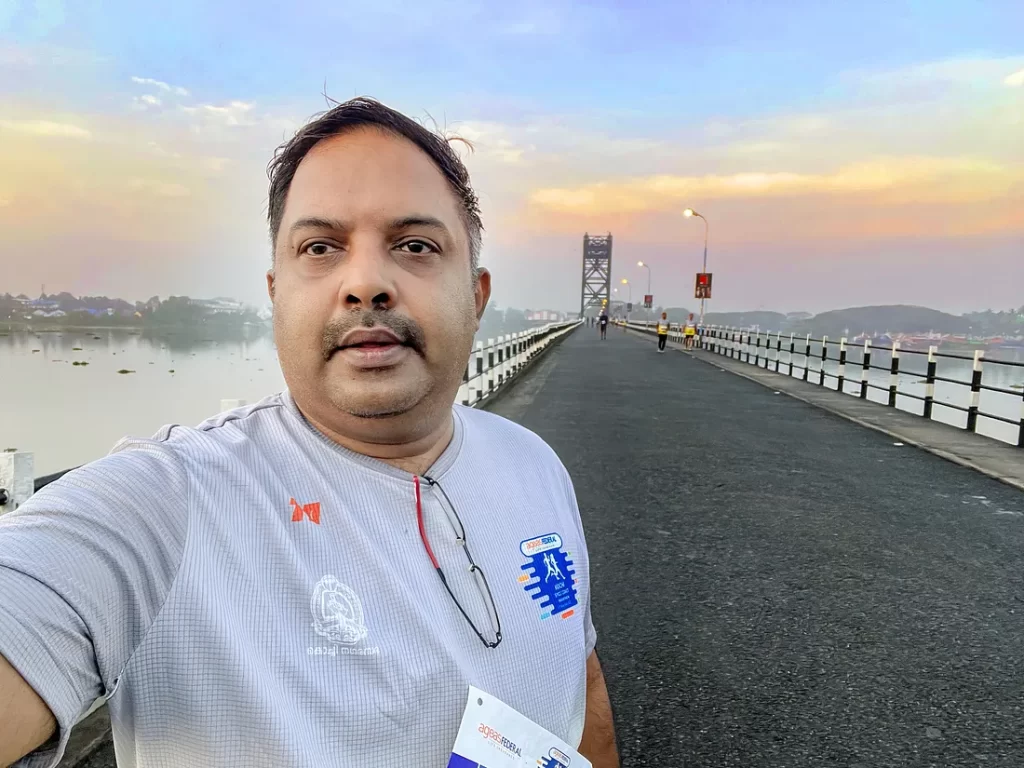
A selfie, right at the Thoppumpady Bridge.
I saw another familiar face, a celebrity singer, coming back from the opposite direction. I saw her face lit up with fulfillment. She is going to complete her Marathon, she must be feeling proud of her!
Just after finishing the Thoppumpady Bridge, I heard the sound of Chenda playing, a team supporting the runners. I saw hydration points and cheerleaders. As I was drowning, losing energy, I was walking. But out of embarrassment, whenever I saw a hydration point, I started running.
When I reached Thoppumpady junction, I saw a direction board that showed FM 26KM | HM 13.2 km. I realized one thing: my return point is not yet reached, and the direction points show it to Fort Kochi’s side. As I passed this point, I saw a large number of people walking. I thought many of them were like me, but because they started early, they got the time advantage. I reached Chullikal Jn and somebody called my name. It was someone I knew, who was part of the organizing team, and he asked why I was late. I said I didn’t get a parking space and that got me delayed. He just consoled me as if I was worried, and he gave some instructions to other organizers.
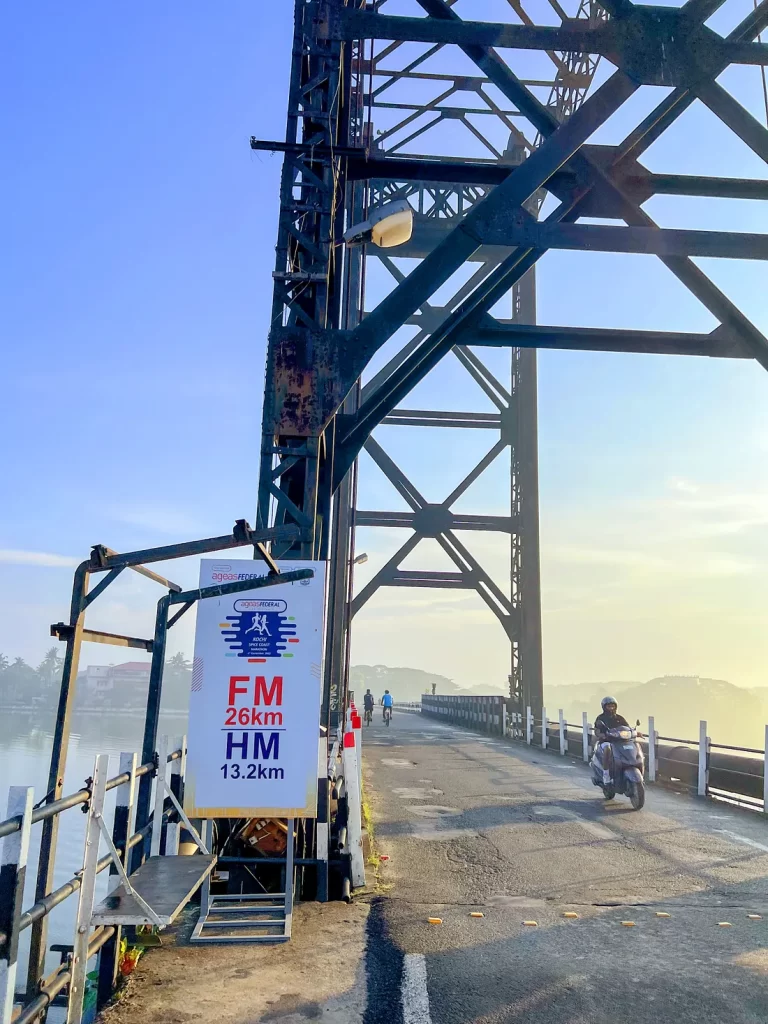
The direction board
Continuing on my journey, I realized that the return point was not Chullikkal as I had originally thought. Just after finishing that point, a young girl on a cycle started accompanying me. She cheered me on and let me know that it would take one more kilometer to reach the midway point. She also informed me that the organizers had been alerted not to leave since someone was very late, and they needed to have the Radio Frequency reader to gauge my BIB (a chip inside it). They were already planning to take it, but the young girl part of the organizing team indicated them and I just crossed the midway point after a mosque.

The Volunteer girl on a cycle.
Now, I have completed half of the half marathon. The roads were completely restricted to vehicle movement to ensure the safety of the runners and the police were strict with it. By the time I passed this point, I had overtaken one young friend and his mother. That was the first time I passed someone, and it gave me confidence. I firmly decided that I would complete the 21 kilometers. Within 20 minutes, I passed a couple more people, waving and cheering them on.
Back at the Thoppumpady Bridge, I saw a photographer pointing his camera toward me, an official race photographer. Even though I was exhausted, I increased my speed and tried to have a smile on my face. I thought if I got this photo after the race, I would update it on my social media and announce to the world, “Hello my dear friends, I have just completed a marathon, a never expected one in my life!”
I remembered the direction board and calculated in my mind that I had eight more kilometers to complete. By the time I reached back near the Naval Basepoint, the restriction for vehicles had been withdrawn. I saw the buses honking, bikes rushing and trucks racing the accelerators. They had all been put on a stop and were now freed from the restrictions. I slowly jogged and reached the Venduruthy Bridge.
My inner voice told me that I was not going to make it. I felt pain in every inch of my body and thought I would collapse. I knew the beginning of my suffering. The sun was not kind, and I couldn’t withstand the intensity of the sun’s rays, even after drinking water from different water stations. I thought about how my father took me to Sabarimala in my childhood. It was too difficult for a 7-year-old boy to withstand the cold in those days, and it was difficult to climb the divine path with bare feet. That thought gave me energy. If I could complete it at an early age, if I am not doing this now, it’s going to be a failure. With heavy legs, I covered the Venduruthy Bridge.
I thought many times to stop in between. I saw people staring at me. Were they teasing me, or were they thinking, “Why has this man still not finished the race?” I answered myself, “To hell with it.” They must be thinking, “If this obese man can run, why can’t we do it?” I took it positively and made plans to finish my last leg.
When I reached the Shipyard, it was almost impossible to move forward. I knew every step needed to cover Ravipuram, Fine Arts Hall, Gandhi Statue, Maharajas College, KTDC Parking Area adjacent to the Taj Hotel, and finally, Marine Drive. By the time I covered almost 75% of the race, I understood that this race cannot be run with just your stamina. It’s a mental game! I made plans to cover the shortest goals covering each point, and finally, I reached Maharajas and from there crawled to Shanmugam Road.
I had mixed emotions. I could see the finishing point in the distant sight and slowly increased my pace. By the time I reached the small bridge, I started running. I saw a photographer, a few cheerleaders, and organizers standing there. I didn’t stop for a minute; I was running, fearing that I would fall, but I somehow crossed the finishing point. I had finally made it! I couldn’t believe it. Covering all these places at this age, I had finally been able to complete it within the stipulated time.

When I entered the ground, I saw a sea of runners celebrating their day. I saw people taking pictures, laughing, and cheering each other, and some were stretching after the run. An organizer approached me with a specially designed medal and adorned it on me. I couldn’t control my emotions and started sobbing like a toddler. A small group of people asked me whether I was okay. They said I could be proud of myself; I had made it possible. I took the help of someone and took my picture, informing the board, “I am a finisher of 21.1 KM.” I felt like I was on top of the world. I shared the photo with my family group and received my first message from my daughter, “You have done it!” My worried wife congratulated me. I felt relieved.
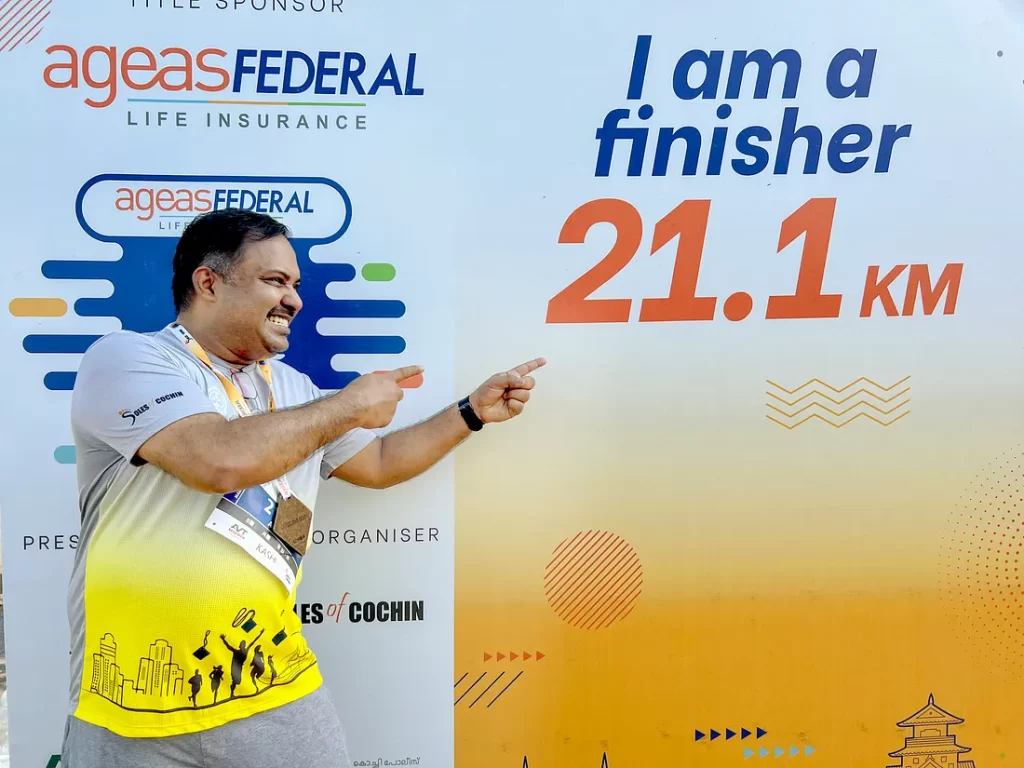
I saw Rocky, the man who motivated me in the beginning. I said, ‘I just completed the run.’ I am sure he did not recognize me, but I was happy conveying the message to this amazing gentleman. Every other person you come across in your life is there for a reason, right?
While driving back from there to my house, I played the same song that I played in the morning. I felt the song motivating and special this time! Driving back, I thought of the times I almost gave up. I was late, sometimes I was not running. I was walking and even crawling, but I completed it. If I can do this, anybody can do this.
It was the greatest feeling I had ever experienced in my life. I knew this was just another beginning!

I participated in another marathon(Santa Run ☝️) on December 18th Dec 2022, and again on March 19, 👇2023 (GTech Marathon), in Thiruvananthapuram — and the jorney continues!!!
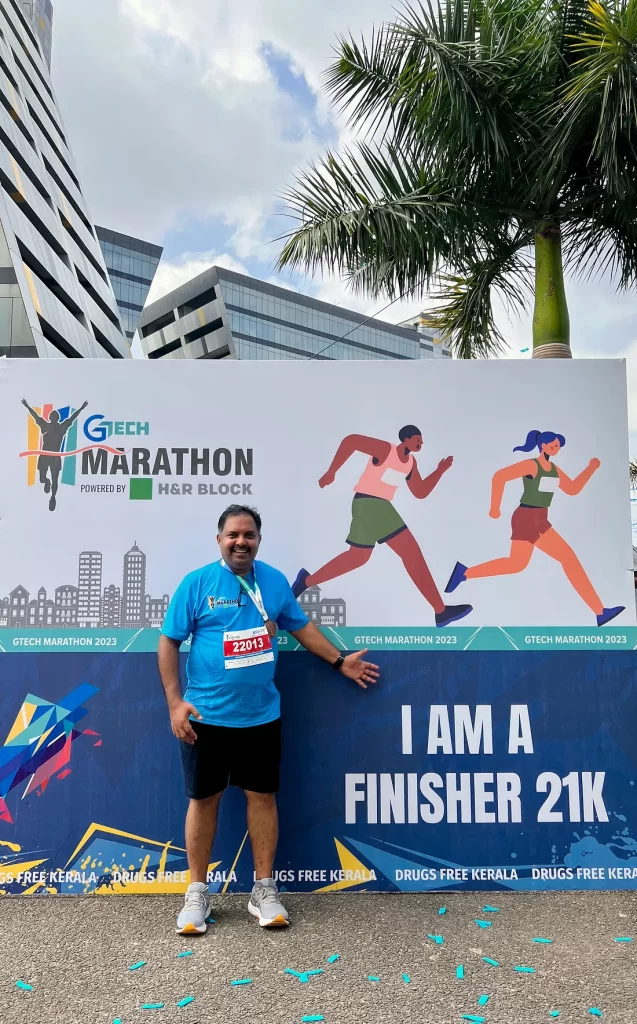
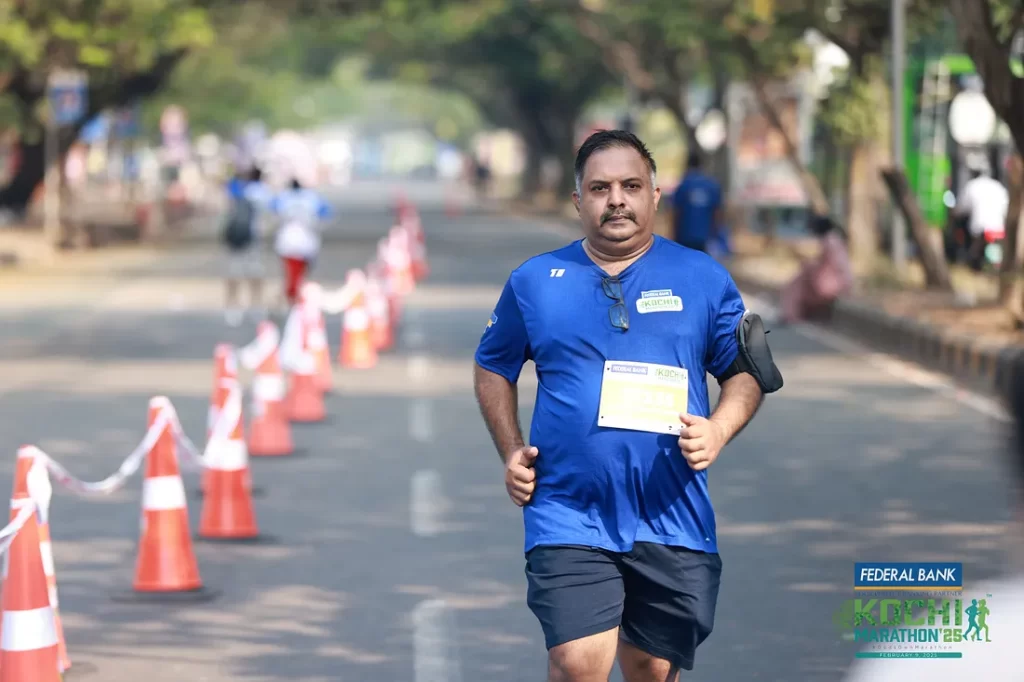
Kochi Marathon on 9th February 2025
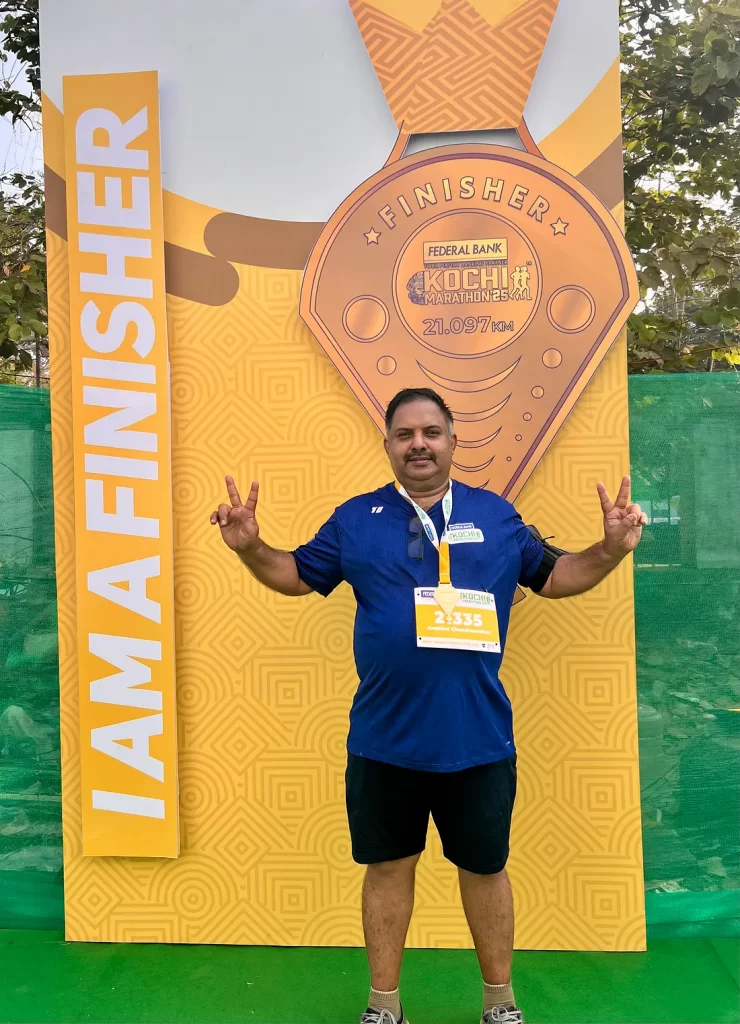
After finishing my 4th half Marathon at Kochi Marathon on 9th February 2025

